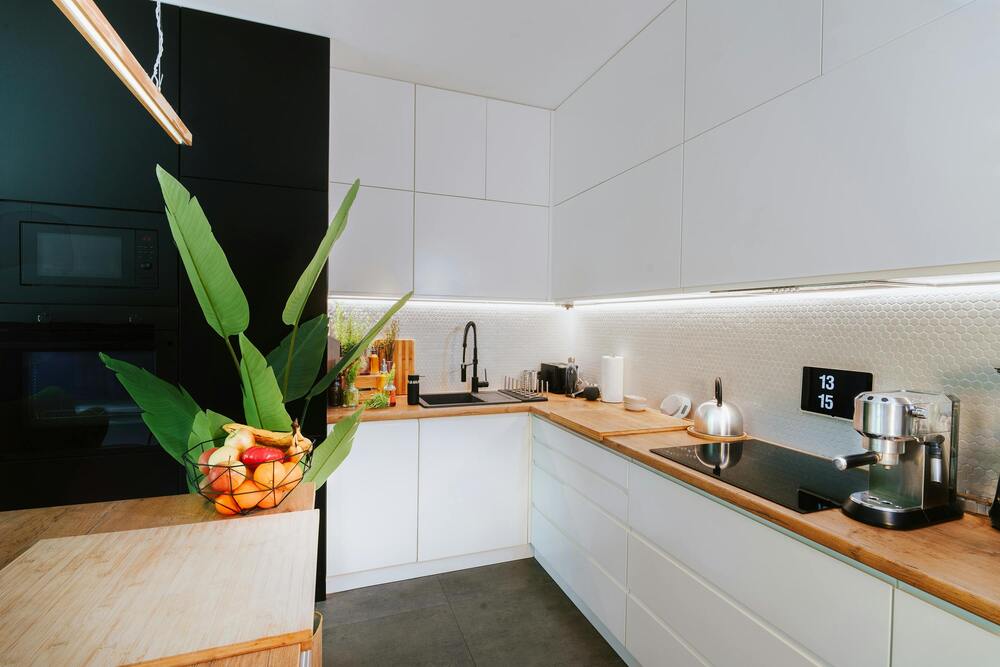A Step-by-Step Cleaning Guide for NZ Homes
Greasy kitchen cabinets are a common sight in busy homes—especially if you cook often. Over time, airborne grease from frying, sautéing, and boiling can settle on your cabinet surfaces, mixing with dust to create a sticky, grimy layer. If left untreated, it can attract more dirt, dull the finish of your cabinets, and even lead to staining or damage.
If you’re wondering how to remove grease from kitchen cabinets, this detailed, step-by-step cleaning guide will help restore their shine—whether your cabinets are wood, laminate, or painted.
Why Do Kitchen Cabinets Get So Greasy?

The answer is simple: cooking releases grease, which becomes airborne and sticks to nearby surfaces. Cabinets above and around the stove are usually the worst affected, especially if your range hood isn’t functioning well or you don’t clean regularly.
What You’ll Need
Most of these supplies are affordable and likely already in your kitchen or laundry cupboard:
Basic Cleaning Supplies:
- Microfibre cloths or soft sponges
- Dishwashing liquid (like Palmolive or Earthwise)
- White vinegar
- Baking soda
- Warm water
- Spray bottle
- Old toothbrush or soft scrub brush
Optional (for deep grease):
- Citrus-based degreaser (eco-friendly brands are widely available in NZ)
- Magic eraser (test on hidden area first)
- Olive oil + baking soda mix (for wood cabinets)
Step-by-Step: How to Remove Grease from Kitchen Cabinets

Step 1: Prep the Area
- Clear your countertop and move items away from the cabinets.
- If needed, lay down a towel or newspaper to catch any drips.
- Test any new cleaning solution on a small, hidden area of your cabinet first to avoid damage.
Step 2: Start with Dish Soap and Warm Water
Dish soap is designed to cut through grease. For light-to-moderate build-up, this is often all you need.
Instructions:
- Fill a bowl or bucket with warm water and add a few drops of dishwashing liquid.
- Dip your microfibre cloth or sponge into the solution, wring it out so it’s damp but not dripping.
- Wipe down greasy cabinet doors, handles, and frames. Work in sections.
- Rinse your cloth often and repeat if needed.
For corners and crevices: use an old toothbrush dipped in soapy water.
Step 3: Use White Vinegar for Tougher Stains
White vinegar is a natural degreaser and safe for most surfaces.
Instructions:
- Fill a spray bottle with equal parts white vinegar and warm water.
- Spray the greasy areas generously and let it sit for 2–3 minutes.
- Wipe down with a clean cloth or sponge.
- Rinse with clean water and dry with a towel.
Note: If you don’t like the vinegar smell, you can add a few drops of lemon essential oil or use citrus vinegar blends available in NZ stores.
Step 4: Tackle Stubborn Grease with Baking Soda
If the grease is thick and sticky, baking soda adds a gentle abrasiveness to help break it down without scratching your cabinets.
Instructions:
- Mix 2 tablespoons of baking soda with 1 tablespoon of water to form a paste.
- Apply the paste to greasy spots using your fingers or a cloth.
- Let it sit for 5 minutes, then scrub gently with a damp sponge or toothbrush.
- Wipe clean with a damp cloth, then dry.
Tip for wood cabinets: Mix baking soda with a little olive oil instead of water. This combo cuts grease while conditioning the wood.
Step 5: Use a Degreaser for Heavy Buildup
When homemade solutions don’t cut it, opt for a commercial degreaser. Look for citrus-based or eco-friendly cleaners like Ecostore or Mico Clean.
Instructions:
- Spray the degreaser directly onto the affected areas.
- Let it sit according to label instructions (usually 2–5 minutes).
- Scrub gently and wipe clean with a damp cloth.
- Rinse well to remove any residue.
Step 6: Clean the Handles and Hinges

Grease loves to cling to cabinet hardware.
Instructions:
- Dip a toothbrush or cloth in soapy water or vinegar solution.
- Scrub around handles, hinges, and decorative grooves.
- Wipe clean and dry thoroughly to prevent rust or corrosion.
Step 7: Final Wipe-Down and Dry
Once your cabinets are grease-free:
- Wipe all surfaces down with a clean damp cloth to remove any remaining cleaner.
- Dry thoroughly with a microfibre towel to prevent water spots and streaks.
How to Keep Kitchen Cabinets Grease-Free

Regular maintenance is the key to avoiding tough build-up:
✅ Wipe cabinets weekly with warm soapy water.
✅ Use your range hood every time you cook.
✅ Deep clean monthly with vinegar or baking soda.
✅ Avoid harsh abrasives that can damage the finish.
✅ Install cabinet protectors or liners inside for easier upkeep.
Final Thoughts
Grease-covered kitchen cabinets are a common issue in many households, but thankfully, it’s one that’s easy to manage with the right cleaning techniques and a bit of regular upkeep. Whether you prefer natural solutions like vinegar and baking soda or need something a little stronger for stubborn build-up, there’s a method to suit every kitchen.
And for those times when the mess gets out of hand, or you’d rather not spend your weekend scrubbing, a professional cleaning service like Jim’s Cleaning NZ can be a simple, stress-free way to restore your kitchen’s sparkle.
With consistent care, your cabinets can stay clean, fresh, and grease-free all year round.
👉 Call us today or book online to get your kitchen looking brand new—without lifting a finger!
